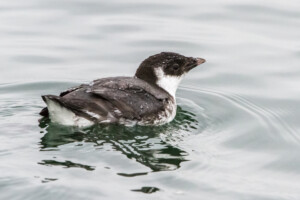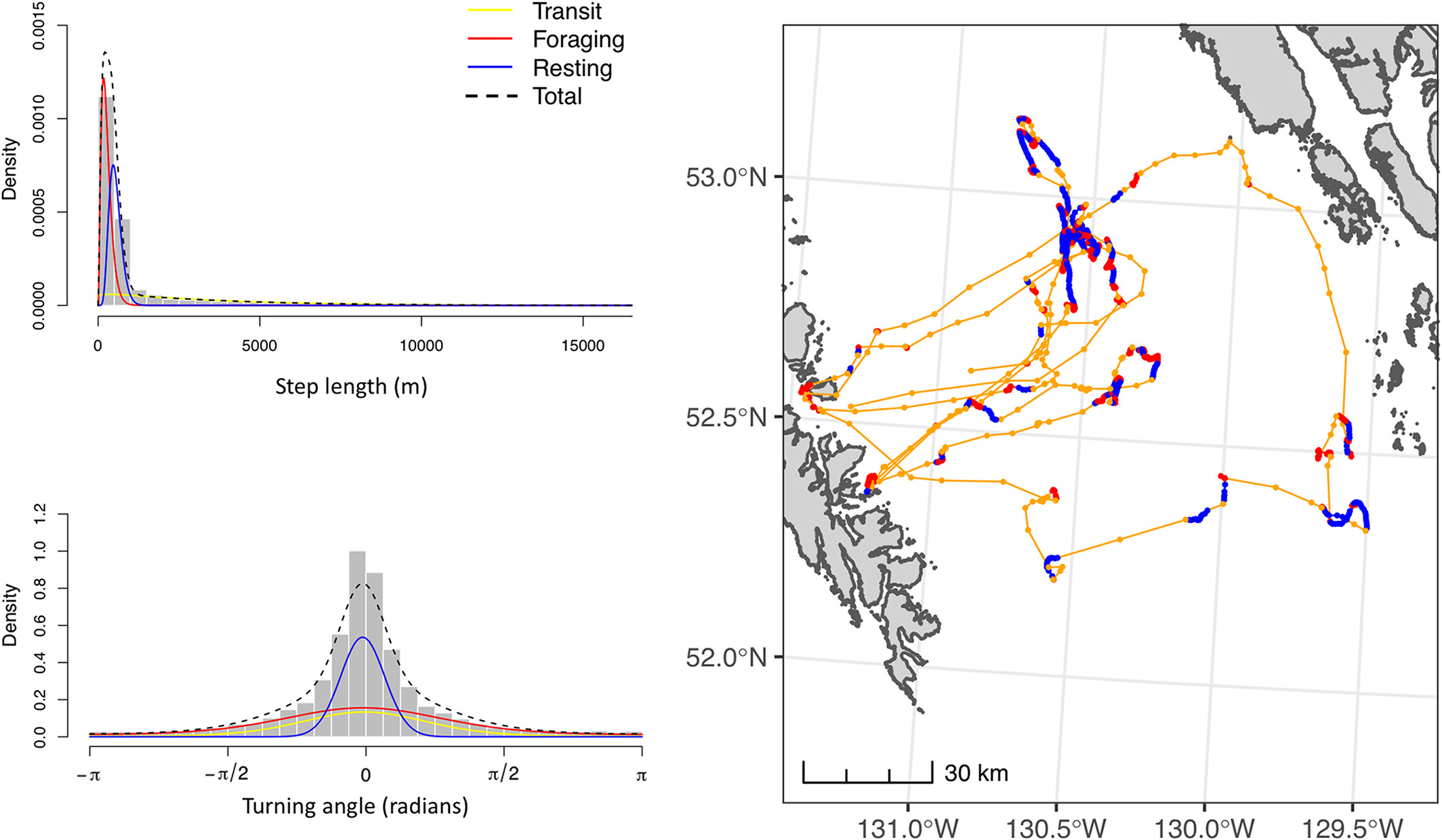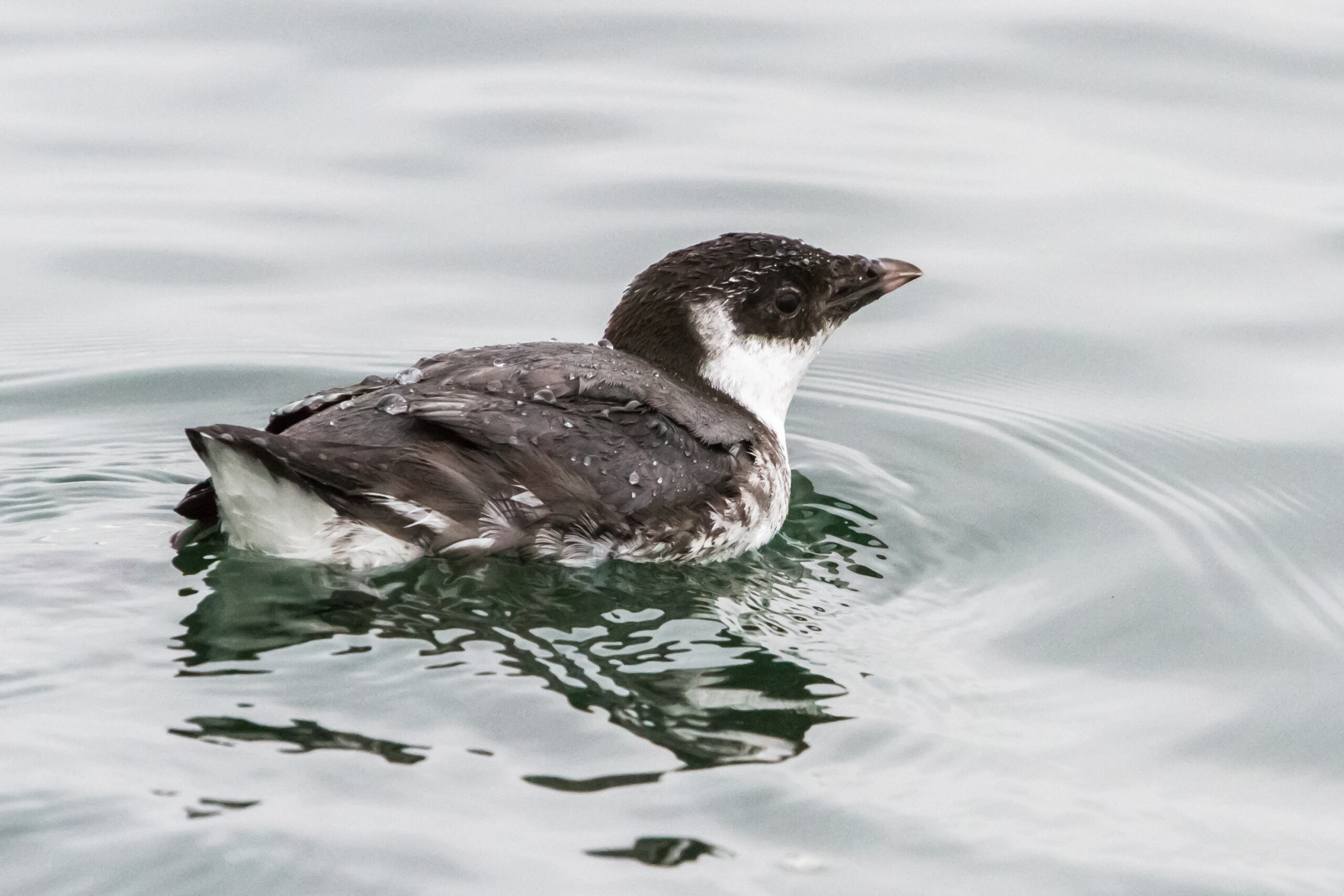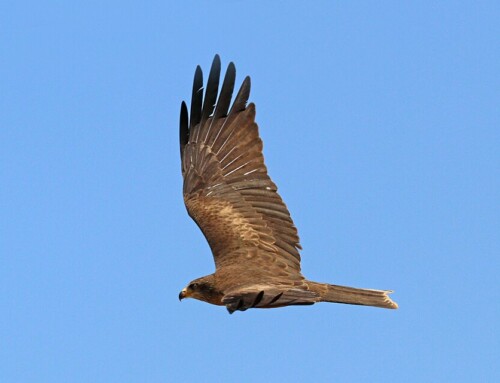
LINKED PAPER
Characterizing Ancient Murrelet Synthliboramphus antiquus movement behaviour during breeding-season foraging trips using hidden Markov models. Pattison, V., Bone, C., Cowen, L. L. E., O’Hara, P. D., & Wilson, L. 2023. IBIS. DOI: 10.1111/ibi.13173. VIEW
Ocean habitats, and the multitude of species dependant on them, are being negatively impacted by various anthropogenic threats including oil spills, plastic pollution, and climate change. In order to mitigate these impacts and protect marine species, including seabirds, it is important that we improve our understanding of where these species are and how they are using the marine environment. While this has often proven difficult, the increased availability and efficacy of tracking devices in recent decades has helped researchers learn more about seabird movement and behaviour at sea.
In a recent study in Ibis, Vivian Pattison and colleagues used GPS tracking devices to collect data from Ancient Murrelets (Synthliboramphus antiquus) and characterised their movement behaviour during the breeding season.
Ancient Murrelets at sea
Ancient Murrelets are small seabirds of conservation concern in Canada, with around 50% of the world’s population breeding on the islands of Haida Gwaii, British Columbia, Canada (Gaston, 1992). Vessel surveys have previously identified high densities of Ancient Murrelets along the coast during the breeding season (Fox et al. 2017), but these surveys have not been able to provide details about these birds’ sex, life stage, or behaviour. Given that birds foraging at sea are at risk from a number of potential threats such as those arising from commercial fishing, knowing more about these activities can help when making decisions surrounding species conservation management and marine spatial planning.
The researchers attached archival GPS tags to Ancient Murrelets on Ramsay Island in 2018 and George Island in 2019, with 42 individuals tracked in total. The researchers also collected blood samples from individual birds once the tags were recovered to download the data and used these for sex determination. Hidden Markov models (HMMs) were used to identify the characteristics of key movement behaviours while at sea and classify three discrete behaviour states: transit, resting, and foraging.

Figure 1. Probability density plots of step lengths and turning angles (left) defining the three behaviour states estimated from Ancient Murrelet GPS tracks. Density plots are from the final hidden Markov model from 2019 data only. Distributions are gamma (step length) and von Mises (turning angle). Example trips coloured by behaviour state (right), as classified using the Viterbi algorithm. Two trips are from 2018 (lines originating from Ramsay Island, to the north) and two trips from 2019 (lines originating at George Island, farther south).
Breeding-season foraging behaviour
The results showed that Ancient Murrelets in this study area travelled as far as a mean distance of 84 km from their colony, and up to a maximum of 680 km in a single foraging trip. The maximum range travelled away from their colonies is consistent with previous estimates based on flight speeds (Elliott et al. 2010, Shoji et al. 2012), but the total distance travelled on individual trips is much greater than previously suggested. While there were some differences between the colonies and years, oceanographic conditions can lead to fluctuations in prey location and availability which could result in variability between years (Shoji et al. 2012).
In both study years, birds spent around one-third of their time in each behaviour state: foraging mostly occurred during the day; resting often took place throughout a whole night at sea; and transit took place both during the night (when birds were leaving or returning to the colony), and during the day, which may reflect movement between prey patches. Some foraging behaviour was identified as occurring at night, and although this might happen on bright, moon-lit nights (Elliott et al. 2010), it is suspected that an additional behaviour state (e.g. socialising) or environmental factors missing from the model could be influencing track characteristics.
It might have been expected that males and females would differ in their behaviour during the incubation period as female Ancient Murrelets lay two eggs which are proportionally larger to the birds’ mass than most other seabirds (Gaston, 1992), and might be expected to be attempting to regain energy on foraging trips. However, while there was some indication that females were less variable in their activity budgets than males, their movement behaviours at sea were similar and there was no indication of sex-based differences in total trip distance or duration. One explanation of this is that sex-based foraging behaviour differences are often attributed to sexual size-dimorphism, and Ancient Murrelets are sexually monomorphic (Lewis et al. 2002).
Overall, the results of this study can inform conservation of this species by improving our understanding of their movement behaviour and foraging habitats. This study also demonstrates the utility of HMMs for identifying seabird foraging locations by enabling the classification of unobserved behaviour patterns, which could be applied to other species. The researchers suggest that future work could include more complex models incorporating additional data and allowing for the development of a 4-state model, which could account for an additional behaviour state such as socialising. They also highlight that more observational studies will be needed to validate these models.
References
Elliott, K.H., Shoji, A., Campbell, K.L. & Gaston, A.J. (2010). Oxygen stores and foraging behavior of two sympatric, planktivorous alcids. Aquatic Biology 8: 221-235. VIEW
Fox, C.H., Huettmann, F.H., Harvey, G.K.A., Morgan, K.H., Robinson, J., Williams, R. & Paquet, P.C. (2017). Predictions from machine learning ensembles: marine bird distribution and density on Canada’s Pacific coast. Marine Ecology Progress Series 566: 199-216. VIEW
Gaston, A.J. (1992). The Ancient Murrelet: A Natural History in the Queen Charlotte Islands. London: T & AD Poyser. VIEW
Lewis, S., Benvenuti, S., Dall’Antonia, L., Griffiths, R., Money, L., Sherratt, T.N., Wanless, S. & Hamer, K.C. (2002). Sex-specific foraging behaviour in a monomorphic seabird. Proceedings of the Royal Society B: Biological Sciences 269: 1687–1693. VIEW
Shoji, A.M., Yoneda, M. & Gaston, A.J. (2012). Ocean climate variability links incubation behaviour and fitness in ancient Murrelets (Synthliboramphus antiquus). Canadian Journal of Zoology 90: 361-367. VIEW
Image credits
Top right: Ancient Murrelet (Synthliboramphus antiquus) | Eric Ellingson | CC BY 2.0 Wikimedia Commons
Blog posts express the views of the individual author(s) and not those of the BOU.
If you want to write about your research in #theBOUblog, then please see here





